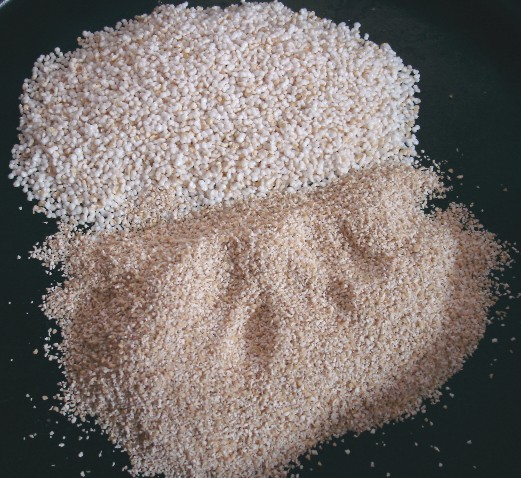
Oat bran is the second chapter in the fiber fad that started with wheat bran around 1980. Wheat bran, the fiber in wheat, is rich in the insoluble fibers cellulose and lignin. Oat bran’s gee-whiz factor is the soluble fiber betaglucans. For more than 30 years, scientists have known that eating foods high in soluble fiber can lower your cholesterol, although nobody knows exactly why. Fruits and vegetables (especially dried beans) are high in soluble fiber, but ounce for ounce, oats have more. In addition, beta-glucans are a more effective cholesterol-buster than pectin and gum, which are the soluble fibers in most fruits and vegetables. By 1990, researchers at the University of Kentucky reported that people who add 1⁄2 cup dry oat bran (not oatmeal) to their regular daily diets can lower their levels of low density lipoproteins (LDLs), the particles that carry cholesterol into your arteries, by as much as 25 percent.
Recently, scientists at the Medical School of Northwestern University, funded by Quaker Oats, enlisted 208 healthy volunteers whose normal cholesterol readings averaged about 200 mg/dl for a study involving oat bran. The volunteers’ total cholesterol levels decreased an average of 9.3 percent with a low-fat, lowcholesterol diet supplemented by 2 ounces of oats or oat bran every day. About one-third of the cholesterol reduction was credited to the oats. Oat cereal makers rounded the total loss to 10 percent, and the National Research Council said that a 10 percent drop in cholesterol could produce a 20 percent drop in the risk of a heart attack.
Do I have to tell you what happened next? Books on oat bran hit the bestseller list. Cheerios elbowed Frosted Flakes aside to become the number one cereal in America. And people added oat bran to everything from bagels to orange juice.
Today scientists know that although a little oat bran can’t hurt, the link between oats and cholesterol levels is no cure-all.
As a general rule, an adult whose cholesterol level is higher than 250 mg/dl is considered to be at high risk. A cholesterol reading between 200 and 250 mg/dl is considered moderately risky. A cholesterol level below 200 mg/dl is considered pretty good. No, that’s not a technical term, but you get the idea.
If your cholesterol level is above 250 mg/dl, lowering it by 10 percent through a diet that contains oat bran may reduce your risk of heart attack without the use of medication. If your cholesterol level is lower than that to begin with, the effects of oat bran are less dramatic. For example:
- If your cholesterol level is below 250 mg/dl, a low-fat, low-cholesterol diet alone may push it down 15 points into the moderately risky range. Adding oats reduces it another 8 points but doesn’t take you into okeydokey territory, under 200 mg/dl.
- If your cholesterol is already low, say 199 mg/dl or less, a low-fat, low-cholesterol diet plus oats may drop it to 180 mg/dl, but the oats account for only 6 points of your loss. Recognizing oat bran’s benefits, the Food and Drug Administration now permits health claims on oat product labels. For example, the product label may say: “Soluble fiber from foods such as oat bran, as part of a diet low in saturated fat and cholesterol, may reduce the risk of heart disease.” By the way, the soluble pectin in apples and the soluble beta-glucans (gums) in beans and peas also lower cholesterol levels. The insoluble fiber in wheat bran does not.

No comments:
Post a Comment